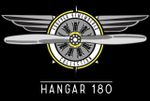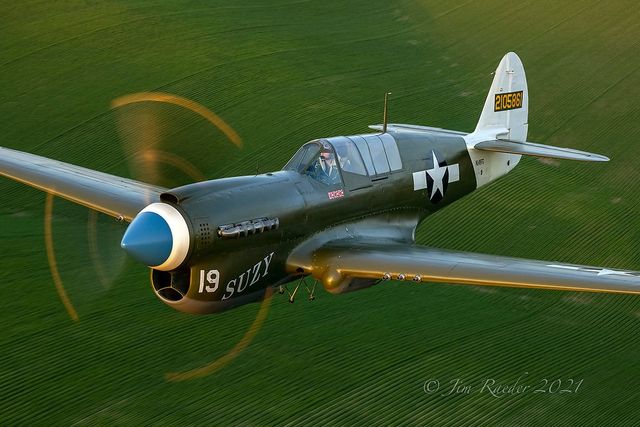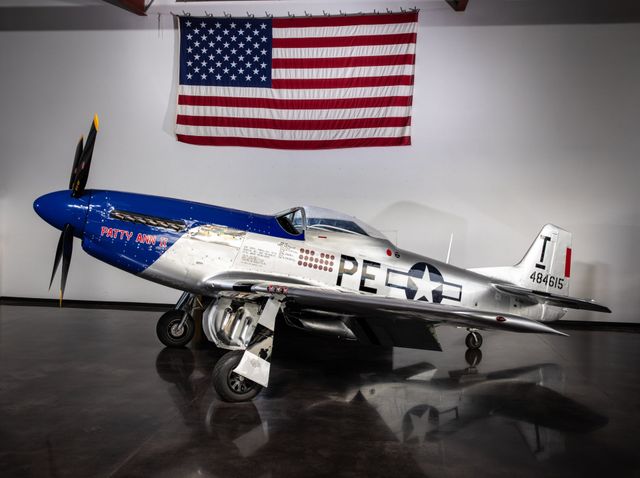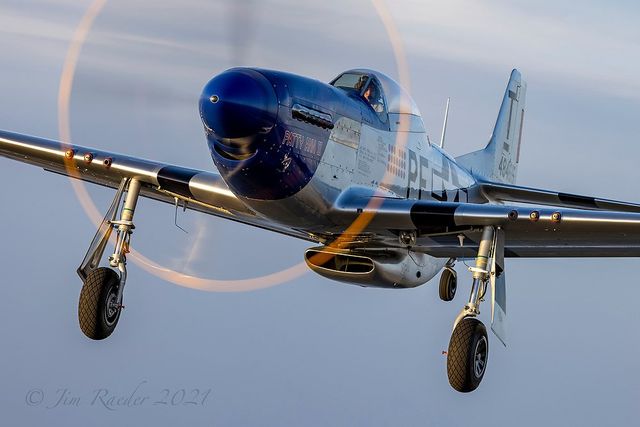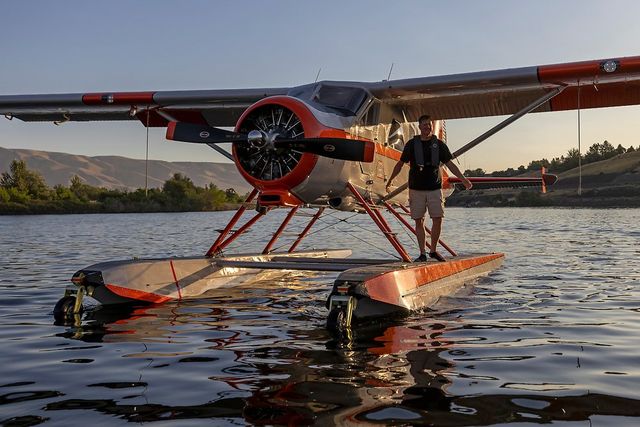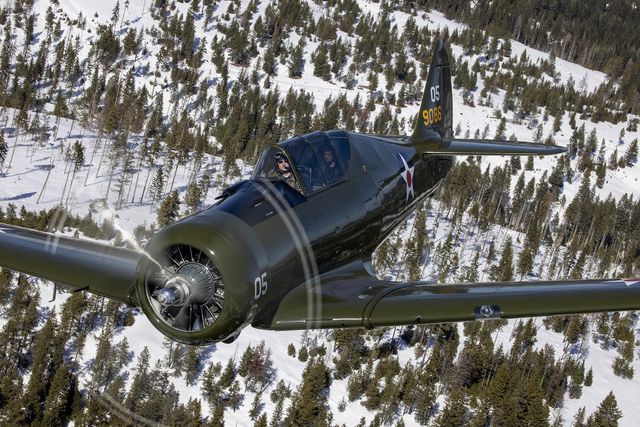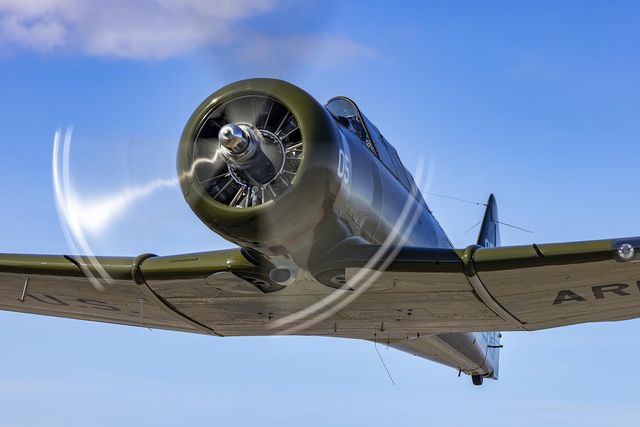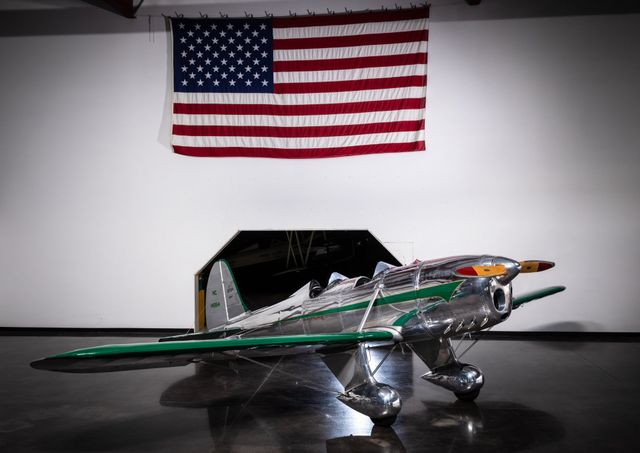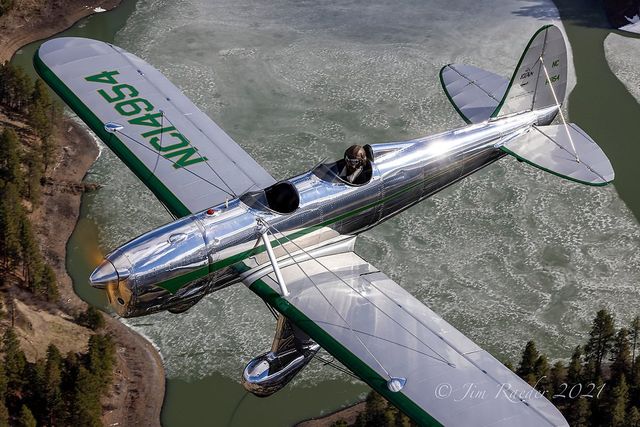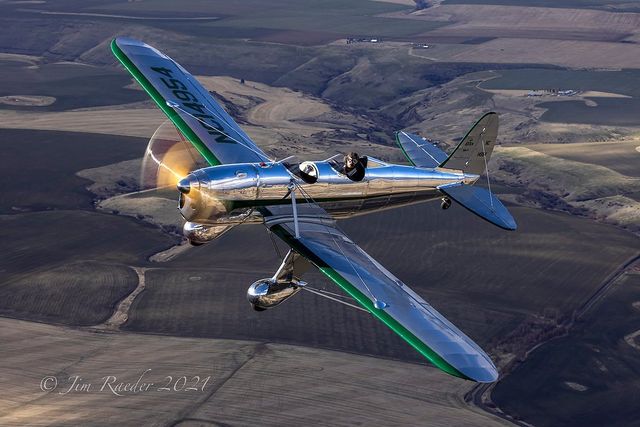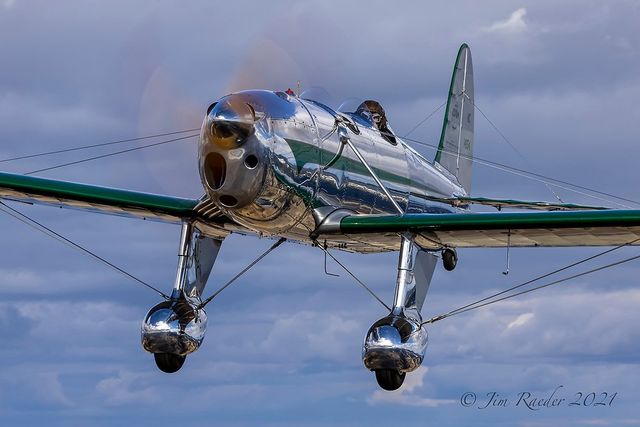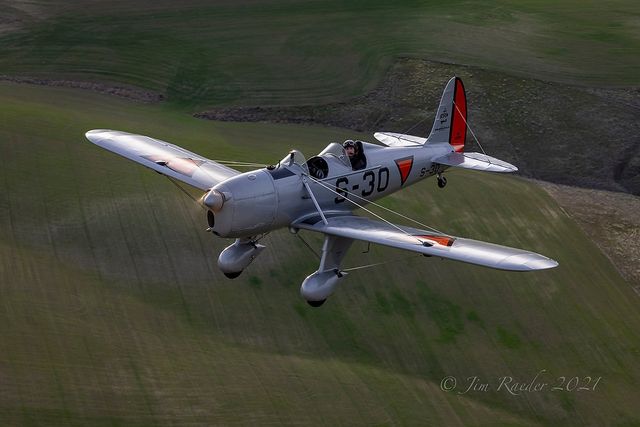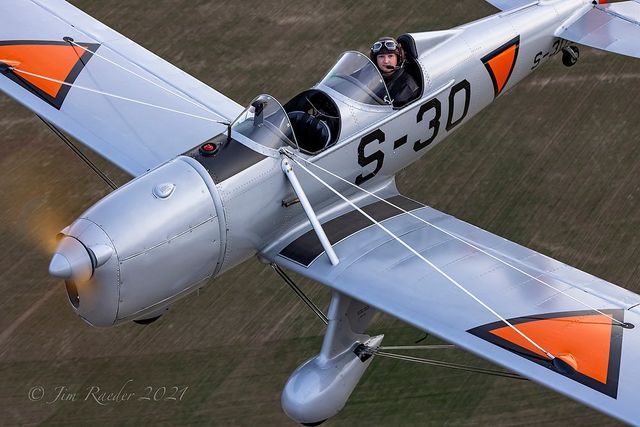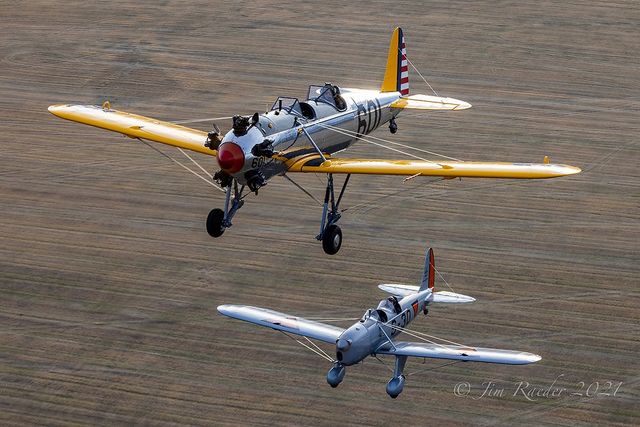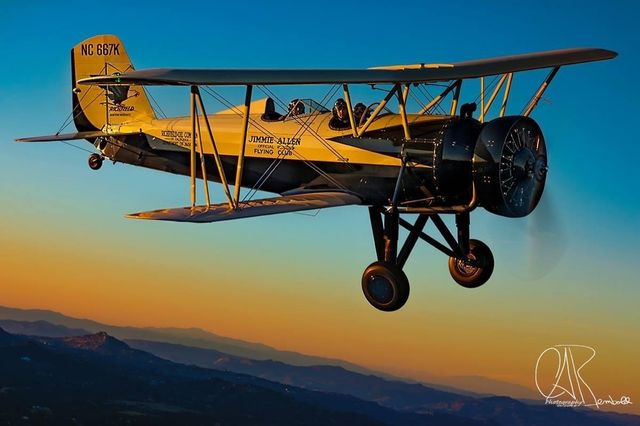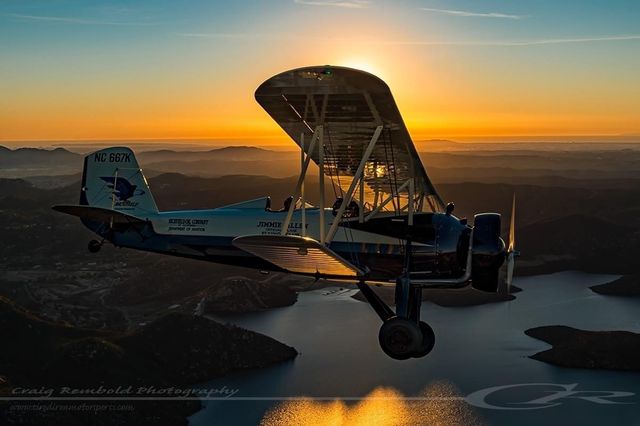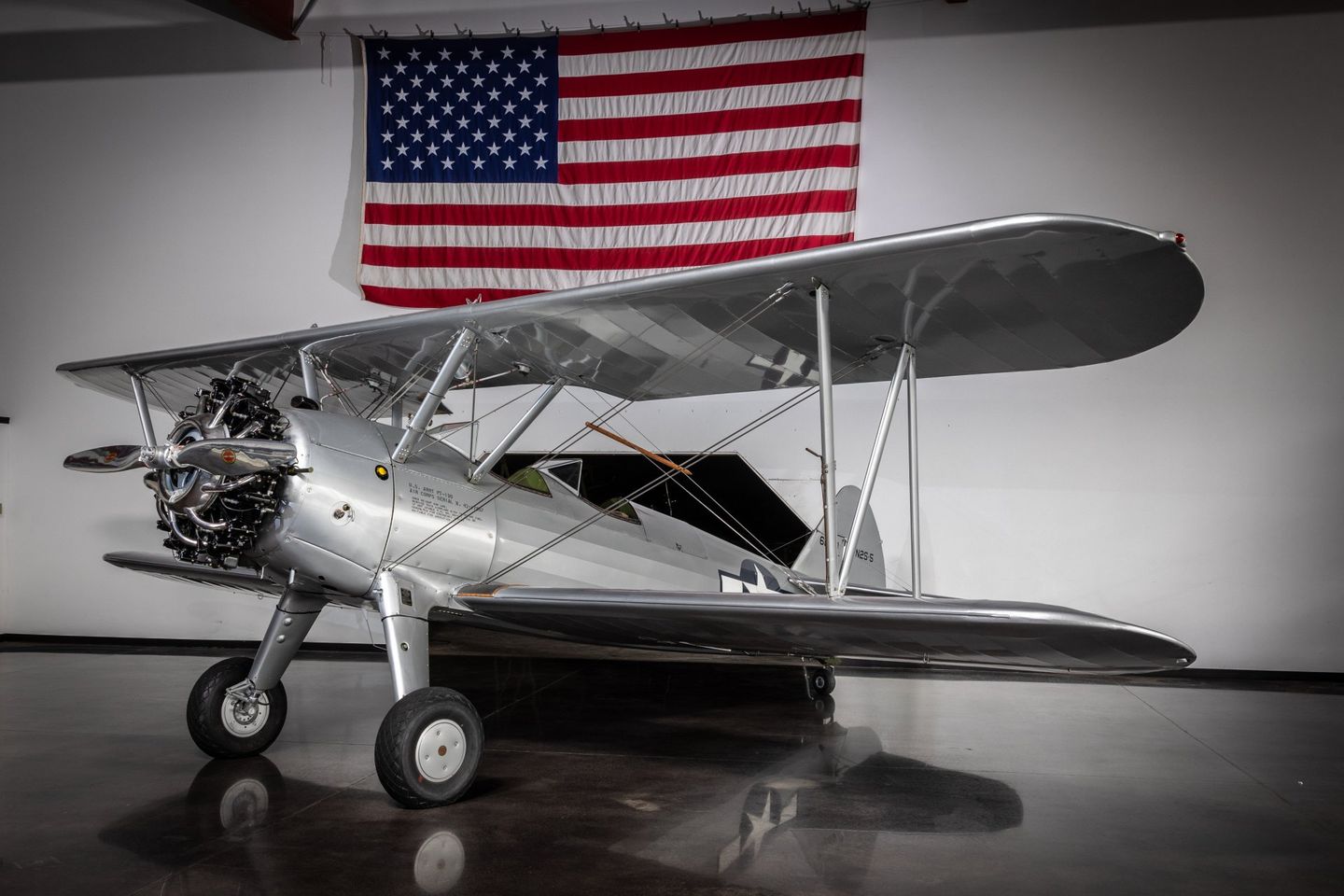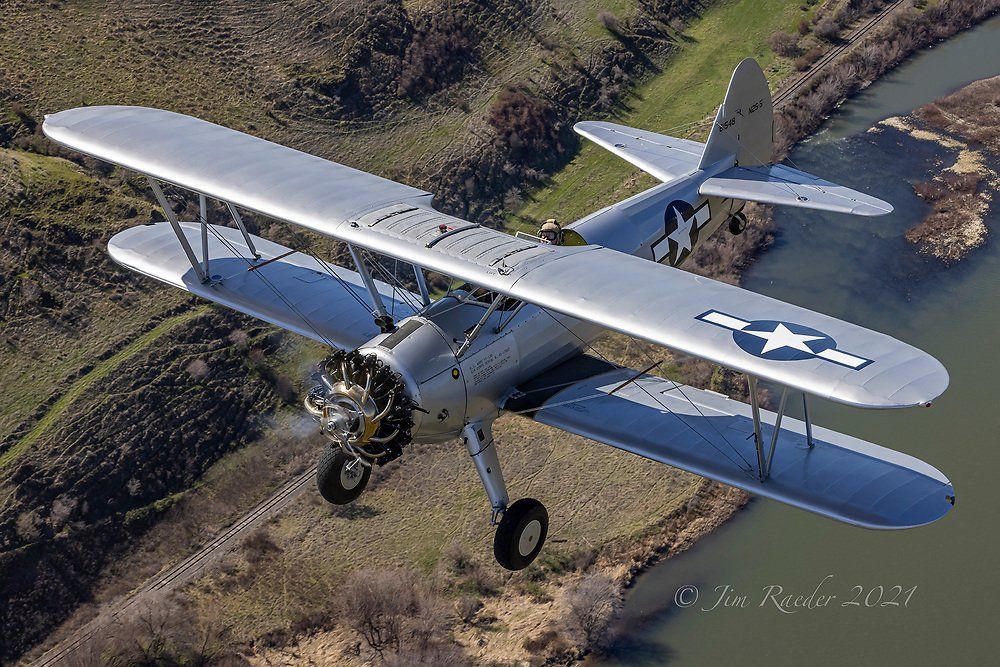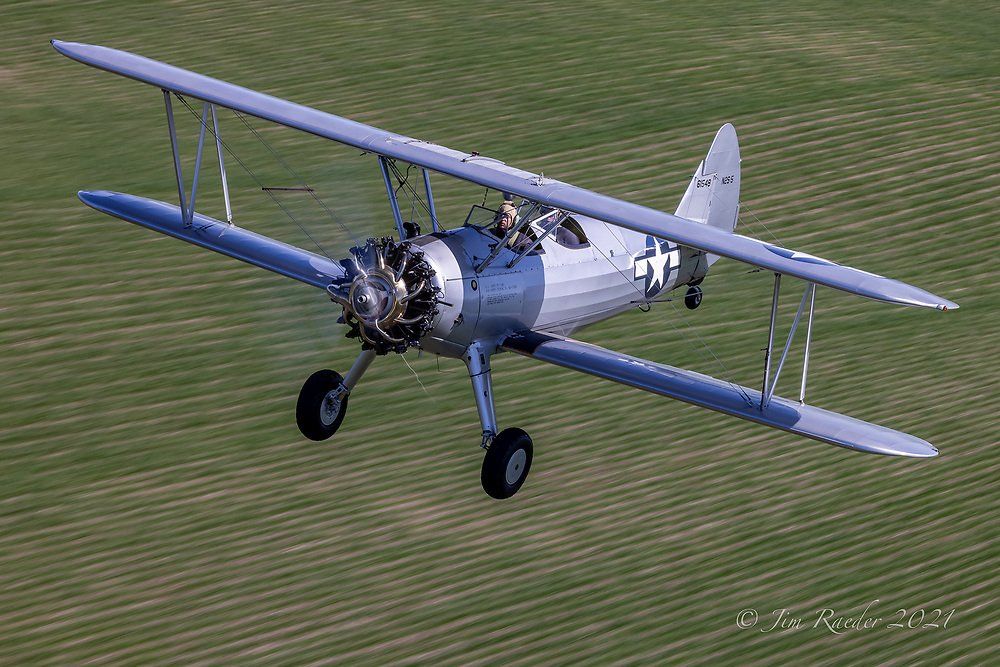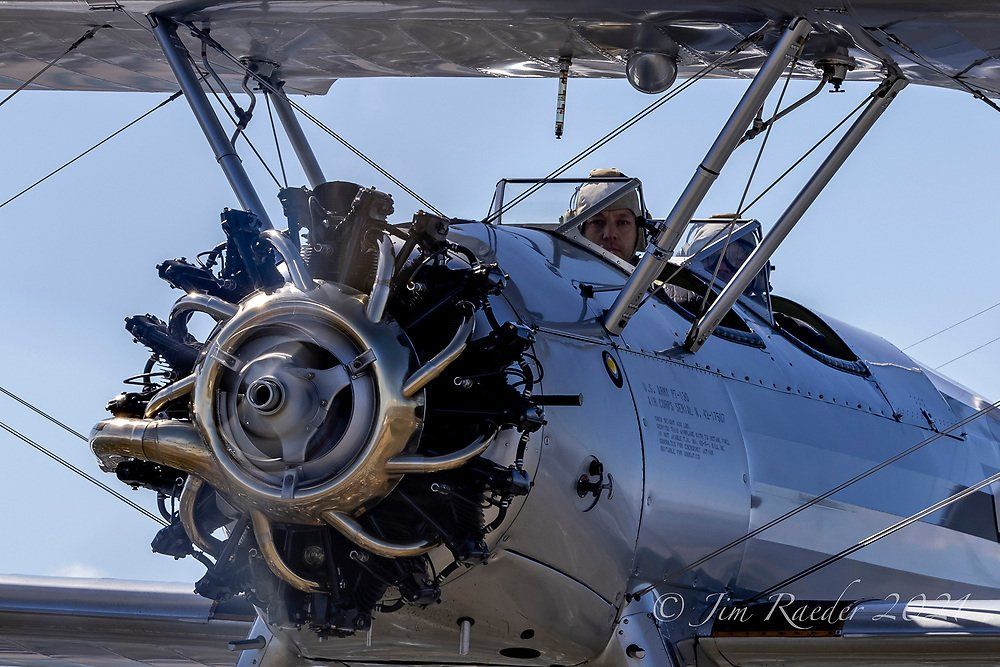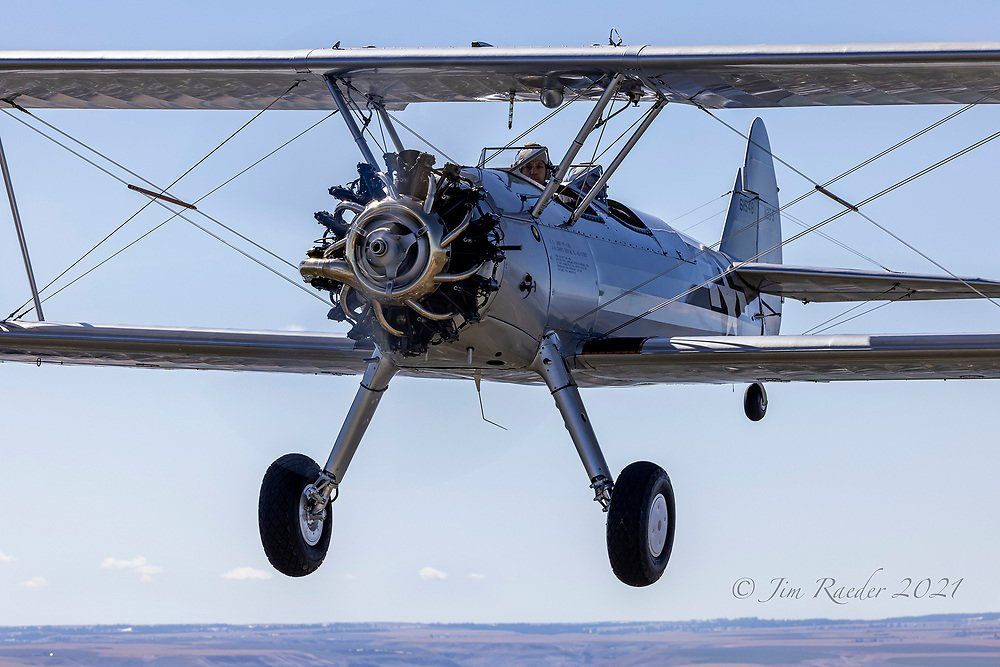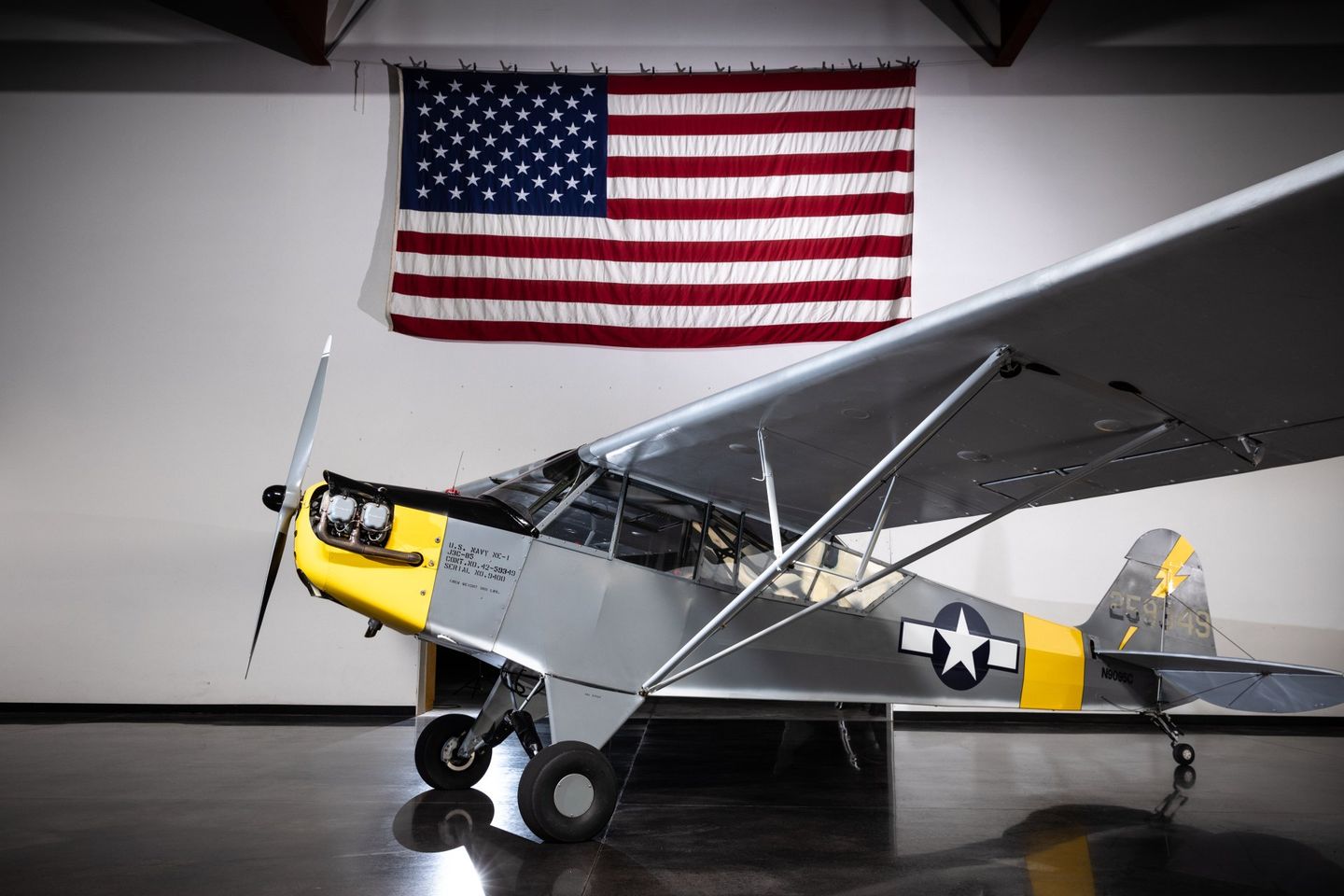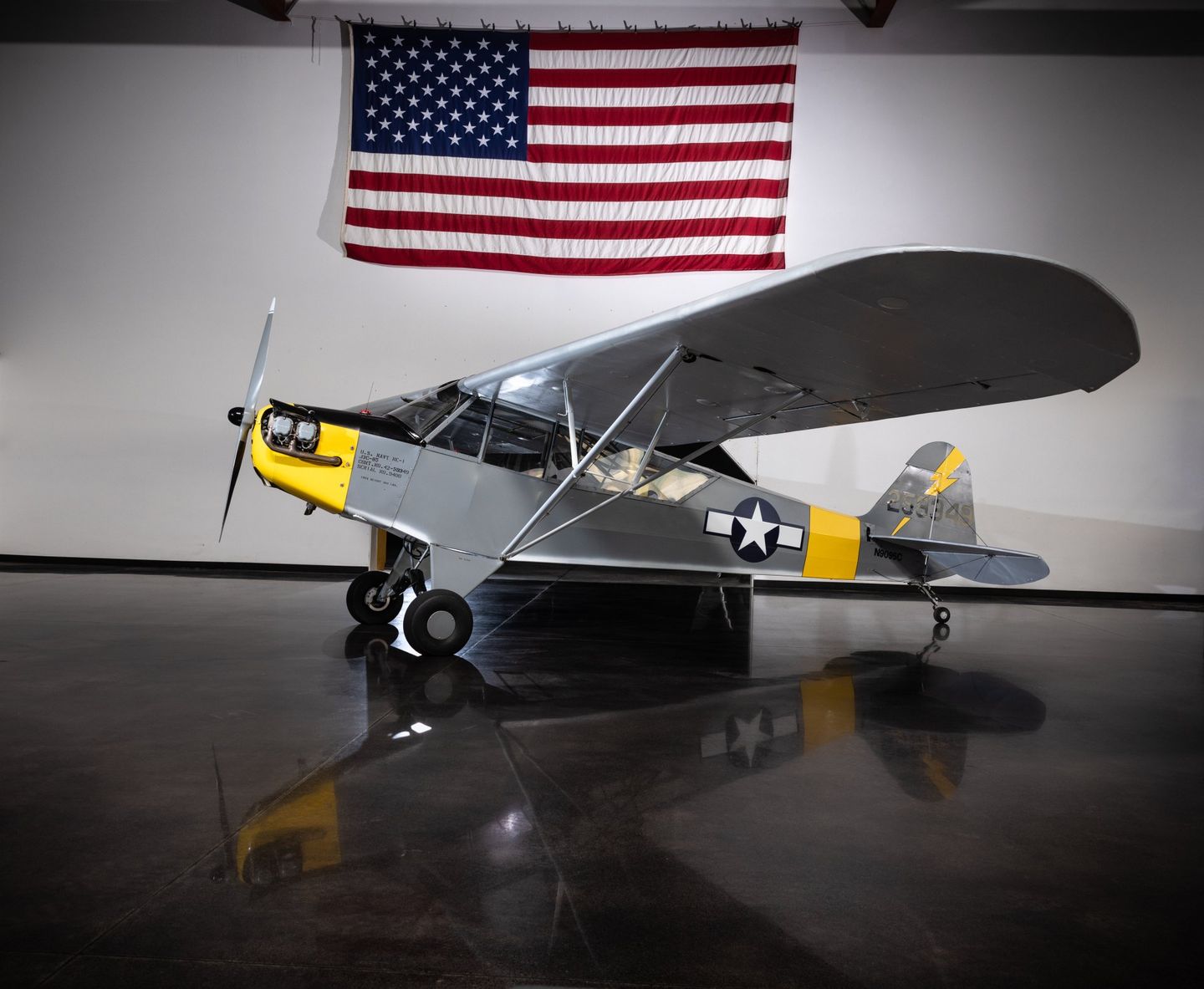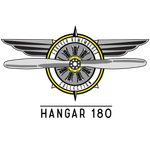Hangar 180 background
Our dear friend Jay Cawley, took Gary for a ride in a ride in a Ryan PT-22 and Gary fell in love with the PT-22. He began research on the Ryan Aeronautical Company after that. Ryan Aircrafts started in San Diego, in Hangar 180 and was later expanded to Hangar 181. Because of Gary's love for the Ryan aircraft, he decided to start an airplane collection and dedicate it to the Ryan Aeronautical Company. He then purchased his first PT-22 that would start the Hangar 180 collection.
Our promise
Our promise at Hangar 180 is to honor our veterans and the men and women who continue to serve our country. We promise to continue to share aviation history and remind everyone why we are able to fly these amazing aircraft.
We promise to Never Forget.
1943 P-40N "Suzy"
The P-40 "Suzy" began its life in Buffalo, NY in 1943. It was shipped to the United States Army Air Force in August 1943 in San Diego. It was later assigned to the 49th Fighter Group in New Guinea. When the Army Air Force upgraded to the P-38's, many P-40's, including Suzy, were left behind in the jungle.
30 years later it was discovered in the jungle by Charles Darby, right where it had been left. Many other aircraft, including Suzy, were gathered up and sent to David Tallichet in California. 6 years later after arriving in California, it was then donated to the Louisiana State University to be used in their future aviation museum which never came into existence.
In 1986, LSU donated Suzy to the Louisiana Naval Museum in Baton Rouge. It was hung from the ceiling until 1998, until John Fallis acquired it, in exchange for a static display and a donation to the museum. Fallis then began the restoration on the P-40. Most parts and pieces were acquired from New Zealand and the man who found the P-40 in the jungle. Suzy is now painted in the markings of the 49th fighter group.
1945 P-51D "Patty Ann II"
The P-51 "Patty Ann II" began its life in Dallas, TX in 1944. It was shipped to the United States Army Air Force in 1944. In 1946 it was then assigned to the Regis Aeronautical Italiana. In 1948 it was then assigned to the Israeli Defense Force.
In 1966 it was certified airworthy as NL55JL in Mansfield, OH. Jimmy Leeward acquired the P-51 in 1974 and raced it as #9 "Miss Florida", up until 1978 when he changed the name to "Cloud Dancer". Leeward raced the plane until 2010 and sold it to Phil Petrick of Sidney, MT, to pursue his dream of building a faster airplane. The name was then changed to "Blood Brother" because of the friendship Petrick and Leeward had.
In 2021, Hangar 180 purchased the P-51. Gary and Bill then began research on WW2 Aces to paint the P-51 after as tribute. They came across Jack "John" Thornell who was the third highest scoring ace of the 352nd fighter group. Bill then began to repaint the airplane in Thornell's livery. It was then revealed as "Patty Ann II" in September 2021.
1953 DHC-2 Beaver MK.1 (L20A)
In 1953, the beaver was delivered to the USAF. It was built as a L-20A and then redesigned as a U-6A in 1962. In April 1962, it was then assigned to the 7th Air Division as N9822F in High Wycombe, UK. It was then struck off charge from the USAF on August 5, 1966 and then purchased by Merrill Christopher of Salt Lake City, UT in February 1979.
August 24, 1979 it was registered to North Cariboo Flying Service Ltd. in St. John BC as C-GWPL. It was cancelled on November 14, 1984 on Canadian Civil Aircraft Registry (CCAR) on export to the United States. It was then later on registered to St. Cloud Aviation Inc. of St. Cloud, MN In November 1984 as N530SC and was then changed to N111YA in June 1985. August 25, 1990 it was registered to Mike Haggren of Kodiak, AK as N530BJ. Hangar 180 purchased the beaver in October 2017 from Mike.
N530BJ was then prepped and ferry flight took place 2 weeks later, to Clarkston, WA on November 6, 2017. The tear down for the restoration project began on November 7, 2017. The plane was stripped down all the way to the bird cage. Bill hand rolled every new piece of skin for the beaver with the help of Richard Witt and Scott Wohl. The project was completed in July 2022 and attended Oshkosh later that month, where it was awarded the "Keep Em Flying" award and the Golden Wrench award for craftsmanship.
1952 P-64
Hangar 180's P-64 was originally constructed as a Canadian Harvard MK IV in Ontario, Canada and was taken on charge with the Royal Canadian Air Force. On June 23, 1965, it was struck off charge from the Canadian Air Force, and was stored in Mesa, AZ from 1977-1978, where it was dismantled and uncovered.
In December 1982, Larry Denton of Walla Walla, WA obtained the Harvard and changed the N number to NX202LD. Larry Denton is the father of one of Hangar 180's pilots, Seth Denton. Seth flies the Ryans, P-64 and the P-40 and had no idea he has been flying one of his dads old airplanes! Larry owned the plane up until 1986.
In 1986 Jack Rose of Spangle, WA obtained the airplane and converted it to an NA-50 replica. The engine was changed to a Pratt & Whitney R1340 with a 3 blade prop and the tail was modified to use a SNJ-1.
From 1994 to 2000, the aircraft was owned by Kent Carlomagno of San Rafael, CA. LUKE FIELD markings were applied. On February 8, 2008 to 2009, the plane was sold to The Wyoming Wings LLC in Alpine, WY where the markings were changed to "Lone Eagle" and repainted. On December 19, 2015 the aircraft went to NA-50 Enterprises LLC of Missoula, MT. In April 2017, Hangar 180 obtained the aircraft and was changed from NA-50 to P-64 dress.
1935 Ryan STA
The Ryan STA (Sport Trainer Aerobatic) is a sleek two-seat, low-wing monoplane that debuted in 1934. The STA version sported a more potent 125 hp Menasco C4 engine, pushing the aircraft into the aerobatic realm. This aircraft was known for its aerobatic prowess and graceful lines. With only 66 of these aircraft being produced, it's estimated that 10-20 of these are still flying today.
1940 Ryan STM
Ryan began to capitalize on the foreign military market after sending three STM's to Honduras in 1938. From 1938-1941 Ryan exported STM Aircraft to ten countries: Honduras, Mexico,Guatemala, Ecuador, Bolivia, Nicaragua, China and the Netherlands East Indies. The United States also used the STM's as PT-20's for military purposes.
In 1941, Ryan S-30 was shipped to Indonesian Island of Java for service in the Royal Dutch East Indies Military. Between 1941 and 1942, On Java, Ryan's were used to train Dutch and Javanese pilots to fight against the Japanese, deliver medical supplies, and to combat Japanese Zero's. The STM's were unarmed. 12 USA instructors were assigned to train students. In 1942, S-30 escaped Japanese attack on Java with 33 Ryan's via ship to Australia.
Between 1941 and 1946, S-30 was used in the Royal Australian Air Force as A-50-18. In 1946, the aircraft was sold by RAAF to Brown and Dureau Ltd. of Melbourne, Victoria. From B&D Ltd. salvage yard through two Australian owners as VH-AGR. It was then traded for the first Boeing Stearman to go to Australia in 1981. S-30 arrived in San Diego in a container to Allen Airways, who was the third civilian owner.
Restoration took place between 1981-1984. It then received another restoration in 2008, where it was returned to original Dutch East Indies Military Markings; S-30.
1942 Ryan PT-22
The Ryan PT-22 Recruit was evolved from the civil Ryan ST series. The PT‑22 was the first purpose built low-wing monoplane trainer for the Army Air Corps, easing the students toward advanced fighter aircraft. These planes were produced in large numbers, 1,000+ for the USAAF, with 25 produced for the Netherlands. The PT‑22 Recruit wasn’t just another plane—it represented a major leap in flight training, bridging the gap between benign trainers and combat aircraft. Its legacy lives on in warbird flights and museums worldwide, cherished for its history, character, and the skilled aviators it helped train.
Fun Fact: This is the aircraft that started the Hangar 180 collection!
1929 Stearman Speedmail
About the Jimmie Allen Flying Club:
In the 1930's airplanes, air races, speed records, and long distance flights were in the newspapers almost every day and if you were a kid you were fascinated with flying and pretty much "airplane crazy." Pilots named Lindbergh, Doolittle, and Earhart were real life heroes who came right into your living room over the radio. If pilots were the rock stars of those days, then Jimmie Allen was the biggest teen idol. No other program gained the attention and popularity of American kids like the Air Adventures of Jimmie Allen. The radio show inspired the creation of a Jimmie Allen Flying Club. Over half a million members received the club's weekly newspaper as well as flight lessons, games, cards, wings, emblems, & patches. Jimmie Allen Flying Clubs were formed all across the US and overseas. Members could write in and receive their model airplane kids to be built and raced at the Jimmie Allen Air Races, where they would meet their favorite teen idol Jimmie Allen and get their picture taken with the Speedmail NC667K.
Speedmail NC667K was an official ship of the American Legion Aeronautical Division in the 1930's. Richfield Oil Company's Chief Pilot, Dudley M. Steele, made appearances at Veterans events around the country in the plane promoting the Legion veteran's and aviation.
About Dudley Steele:
Steele was a WW1 pilot for the US Army Air Corp. Steele was hired to manage the Richfield Oil Aviation Department in 1927. He remained their Chief Pilot until 1937 and was a significant figure in the West Coast aviation.
Between 1929 and 1937, NC667K was flown exclusively for the Richfield Oil Company in promoting the Jimmie Allen Flying Club, Jimmie Allen Air Races, and the American Legion. Sarah Wilson purchased the project in 2006 and after five years of restoration, she flew the first flight on August 29, 2012.
PT-13 Stearman
In May of 1998, Scott White and Dick Wells were looking for a Stearman project. They had already restored a J-3 cub and a Aeronca L-16. Dick called Scott and told his he had found a project. The wings had most of the ribs broken out and the center section wood was so rotted out, you could poke a screw driver through the spars, according to Scott. The left side had been shot with a shot gun and the baggage compartment had a bullet hole through it.
After 3 years of hard work and dedication, Scott and Dick had restored this 1944 PT-13D N2S-5 Stearman, in the original color of the "Standardized Stearman". The standardized Stearman was used in the Navy and Army and was known to the Navy as the N2S-5 and to the Army as the PT-13D.
1768 were delivered from June 1943 to February 1945.
873 went to the Navy and 895 went to the Army.
This particular Stearman was commissioned to Eagle Field on July 4, 1944 and was struck off the United States Air Force in February 1949.
1941 L-4 Piper Cub
The first flight of the prototype took place in September 1930. The model was later adopted by Taylor Cub. In December 1930, William Piper bought Taylor Company and the cub was renamed the Piper J-3 and they were selling for around $1,000.
In 1938 the Mexican Air Force were interested in the J-3 for boarder surveillance. In 1940, 3,000 copies were shipped from the factory to the US Civil Aviation and it took roughly 20 minutes to build one. The Piper was selected in June to help aid the United States in the war against Germany and Japan. It would be used to observe artillery fire and it later took the name L-4 (L for Liaison).
The piper L-4 was used in all theaters of operations for the US Army during the second World War. After WW2 the L-4 was used in the Korean War and France also used it during the Algerian war until 1953.
